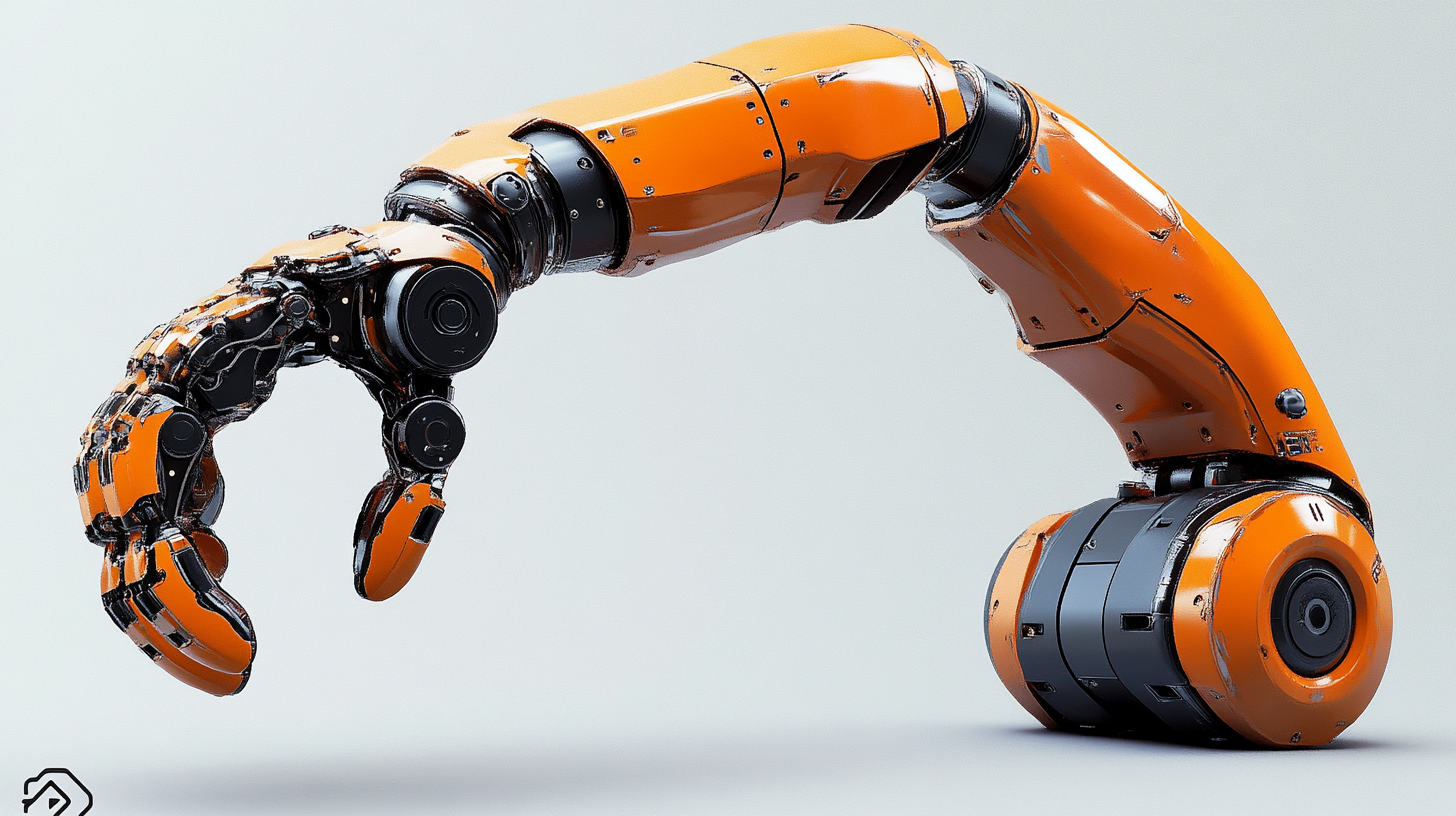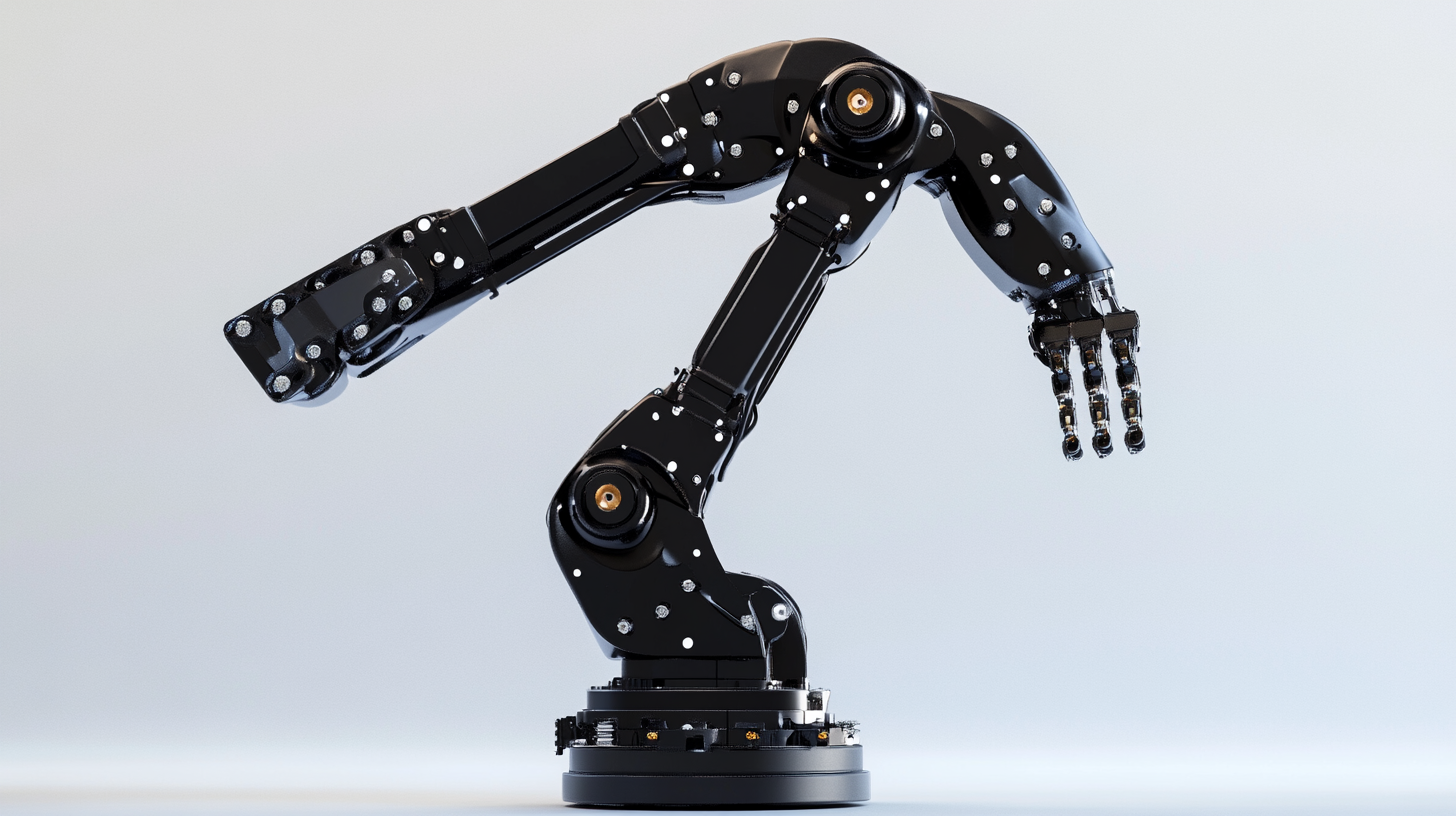Use it to plan your own robot barista payback period.

Want to know more details?
Please, contact your manager.
Aleksandr Maksimovich
Business Development Manager
Nalarobot Robotics | Nalarobot Café
Mobile: +375 333 760 460
(WhatsApp | Telegram | Viber)
BLOG
Ultimate Insights for Sourcing Robot Arm Motors Globally
In today's rapidly advancing technological landscape, the demand for efficient and high-performance robot arm motors is at an all-time high. As industries increasingly rely on automation and robotic solutions to enhance productivity and precision, sourcing the right components becomes crucial for success. Companies are now tasked with navigating a complex global market where options abound, but so do challenges such as quality assurance, cost-effectiveness, and supply chain reliability. Understanding the intricacies of sourcing robot arm motors on a global scale can provide invaluable insights for making informed decisions that propel business growth.
This blog aims to equip readers with essential knowledge regarding the sourcing of robot arm motors, highlighting key considerations and best practices that can streamline the procurement process. From identifying reputable suppliers to evaluating performance metrics, we will explore the pivotal factors influencing the selection of these critical components. By delving into the dynamics of global sourcing, we hope to empower manufacturers and engineers alike to make strategic choices that enhance their robotic systems and drive innovation in their respective fields.

Understanding the Different Types of Robot Arm Motors Available Worldwide
When sourcing robot arm motors globally, it is essential to understand the different types available to ensure optimal performance and efficiency in automation applications. Motors play a vital role in industrial robotics, influencing the precision and reliability of robotic movements. Among the various motor options, frameless torque motors have gained traction, particularly due to their compact design and high efficiency, making them suitable for a range of applications in robotics and automation equipment. Robot arm motors can generally be categorized into brushless and other types, with important considerations such as voltage range and application type influencing the choice for specific deployment. For instance, integrated servo motors are popular for their ability to provide accurate control in automation tasks, while AC and DC motors are frequently selected based on their performance in varying environments. The market is rapidly evolving, with manufacturers innovating to meet the growing demands for energy-efficient and sustainable solutions. Notably, as industries push towards vehicle electrification, the need for advanced motor technologies in robotics intensifies, facilitating smarter automation processes across various sectors. With the global automotive robotics market projected to experience significant growth, companies focusing on next-generation motor technologies will likely drive the future of robotics and automation, paving the way for more sophisticated applications, including human motor augmentation with robotic limbs that enhance daily activities without functional interference.

Evaluating Performance Factors for Selecting Robot Arm Motors
When sourcing robot arm motors, evaluating performance factors is critical to ensuring optimal functionality and efficiency. According to a recent report by MarketsandMarkets, the global robotics motors market is projected to grow from USD 8.2 billion in 2022 to USD 14.2 billion by 2027, reflecting the increasing demand for precision and reliability in industrial automation. Key performance factors include torque, speed, and responsiveness, which play a vital role in determining a motor's suitability for specific applications.
Torque is a primary consideration; it defines the motor's ability to perform tasks requiring rotational force. Research indicates that motors with high peak torque ratings can significantly improve the productivity of robotic arms, particularly in heavy-load applications. In contrast, speed is equally paramount, as it affects the cycle time of operations. For example, a motor capable of rapid movements can enhance the throughput of manufacturing processes. A study from the International Journal of Robotics Research highlights that optimizing both torque and speed can lead to up to a 30% increase in operational efficiency.
Another performance factor that must be considered is the motor's thermal characteristics. Maintaining optimal thermal performance is essential for longevity and efficiency; motors that overheat can lead to system failures and increased maintenance costs. A survey conducted by the IEEE Robotics and Automation Society found that over 60% of manufacturers reported downtime due to motor overheating issues. Therefore, selecting motors designed with effective cooling systems can mitigate such risks and ensure continuous operation in demanding environments.

Key Global Suppliers and Manufacturers of Robot Arm Motors
When sourcing robot arm motors globally, it's vital to identify key suppliers and manufacturers that can meet the diverse demands of the automation industry. The global robotic motor market is projected to reach approximately $6 billion by 2025, with a compound annual growth rate (CAGR) of around 11.9% from 2020 to 2025, according to a recent report by MarketsandMarkets. This growth is fueled by increasing adoption of robots in manufacturing, logistics, and other sectors, emphasizing the need for reliable sourcing partners.
Leading global suppliers such as Siemens, Nidec Corporation, and Panasonic stand out for their innovation and extensive product offerings. Siemens, for instance, has developed a range of high-performance servo motors that cater to various robotic applications, emphasizing durability and efficiency. Nidec Corporation, with its focus on precision motors, has garnered significant market share due to its technological advancements and reliable supply chains. Panasonic’s robust R&D initiatives have led to the introduction of powerful and compact motors, underlining their commitment to meet the evolving needs of the robotic industry.
In addition to established manufacturers, emerging players are also making their mark. Companies like Maxon Motors and Faulhaber are gaining traction by offering specialized solutions that cater to niche markets within robotics. As the demand for customized automation solutions increases, these suppliers are expected to play a crucial role in the overall growth and diversification of the robot arm motor supply chain. This evolving landscape demands thorough research and collaboration with trustworthy suppliers to ensure the right fit for specific automation needs.

Navigating Import Regulations and Compliance for Motor Sourcing
As companies explore global sourcing for robot arm motors, awareness of import regulations and compliance is becoming increasingly crucial. The ongoing adjustments in trade policies, such as the sanctions against connected vehicle imports linked to specific countries, emphasize the need for comprehensive compliance strategies. According to the U.S. Department of Commerce, businesses must align with new Bureau of Industry and Security (BIS) rules that enforce strict compliance requirements for imports, especially as global supply chains become more complex.
With the recent announcement from the Kenya Bureau of Standards (KEBS) regarding the eight-year age limit for used motor vehicle imports starting January 2025, companies must remain vigilant when sourcing motors from international markets. This shift aims to enhance compliance with local standards, illustrating the significant impact that regional regulations can have on sourcing strategies. Consequently, exporters and importers alike face growing pressure to navigate these evolving compliance landscapes effectively.
Moreover, the tightening of compliance rules within the European Union, particularly regarding import control systems, demonstrates a clear shift toward stricter oversight in international trade. Major shipping lines have already implemented policies requiring importers to provide necessary declaration data before cargo is moved, underlining the collective responsibility of the importing community to adhere to regulations. For companies involved in sourcing robot arm motors globally, aligning with these compliance frameworks not only mitigates risk but also fosters a more resilient supply chain.
Cost-Benefit Analysis: Sourcing Robot Arm Motors from Different Markets
Sourcing robot arm motors is a critical decision for manufacturers looking to enhance productivity while minimizing costs. A comprehensive cost-benefit analysis reveals that the choice of supplier and market can significantly impact both operational efficiency and the bottom line. According to a study by MarketsandMarkets, the global robotics market is expected to grow from $62.75 billion in 2020 to $189.36 billion by 2025, highlighting the increasing demand for efficient and innovative components like motors.
When evaluating different sourcing markets, it is essential to consider not only the initial cost of motors but also factors such as shipping, tariffs, and the reliability of supply chains. A report by Grand View Research indicates that sourcing from regions with established manufacturing infrastructure, such as East Asia, can provide a cost advantage due to lower labor costs and increased production capabilities. However, companies must also account for potential currency fluctuations, which can impact overall costs over time.
Furthermore, the analysis of direct and indirect costs is vital. While a motor sourced from a low-cost country may reduce immediate expenses, hidden costs such as longer lead times and lower product quality can negate these savings. A different approach from Europe or North America might offer higher initial costs but can lead to greater reliability, enhanced performance, and reduced warranty claims, thus delivering better long-term value. By carefully weighing these factors, manufacturers can make informed decisions that align with their operational goals and economic constraints.

